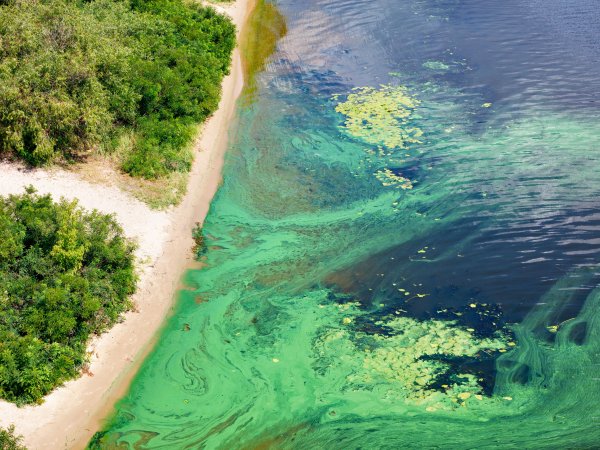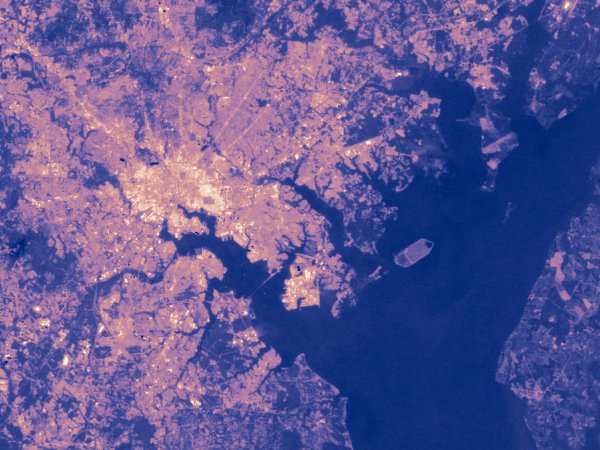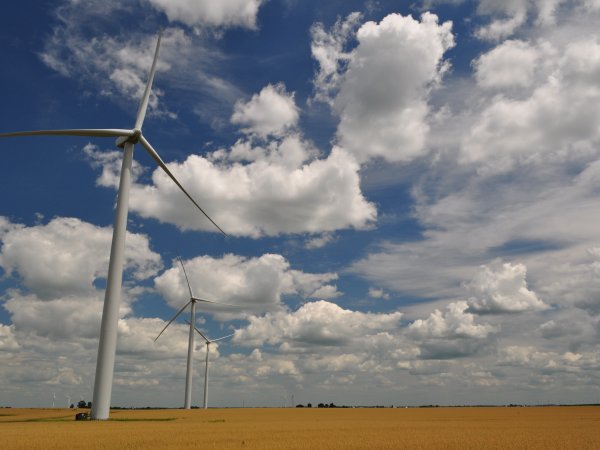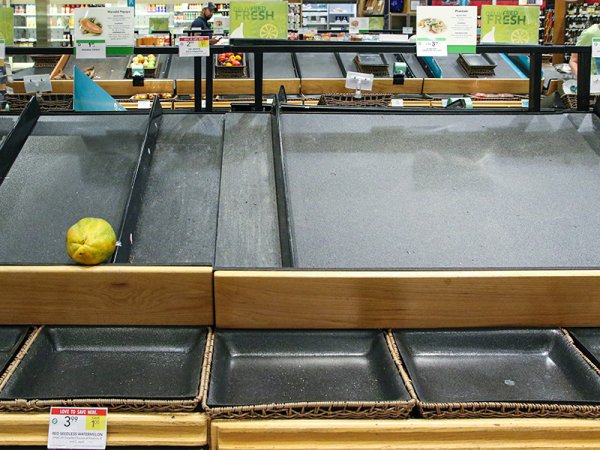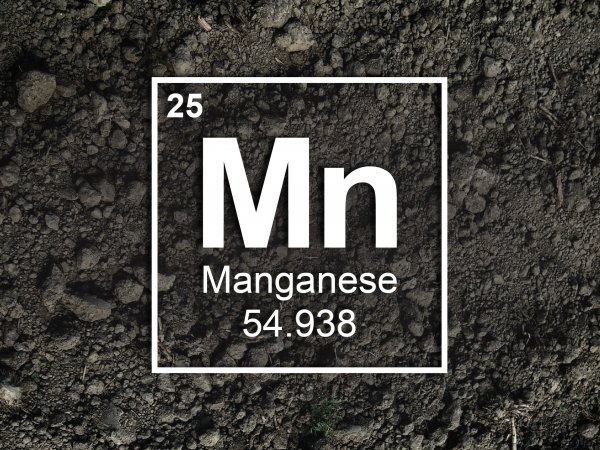Funded Projects
The following 22 projects were awarded seed grant funding in the 2020 IEE Seed Grant Program.
Assessing Pollinator Resilience to Environmental Warming through Novel Technologies
Bee decline threatens ecosystem sustainability through reductions in pollination services to plants and crops. The reliance on bee pollination for food security and ecosystem functioning has emphasized the critical need to understand resilience of wild bee populations in response to environmental stressors. Increased variation in environmental temperature due to climate change is a key stressor to bees and potential driver of pollinator decline generally.
Bioinspired Self-Healing Cement for Sealing Well Leakage: Towards Sustainable Shale Gas Supply
Cement in the oil and gas wells is used primarily to support the casing and to provide hydraulic isolation of various geological formations penetrated by the wellbore. However, this primary job can be jeopardized by the cracking or debonding of cement sheath from either casing or the formation. Of issues exposing the cement sheath integrity to risk are required stimulation practices such as hydraulic fracturing due to high pressure and temperature fluctuations. Typically, these strong fluctuations accommodate the formation of radial cracks and micro-annuli.
Building Energy Savings by Tuning Indoor Lighting
Lighting plays an important role in non-visual responses in areas such as physiology, psychology, cognition, sleeplessness, alertness, and work productivity. Among the various possible non-visual responses, there is a long-held belief that warm-colored lighting induces feelings of warmth, while cool-colored lighting produces the opposite effect, which was first proposed in 1926.
Characterizing Structural Changes in Sodium-Ion Battery Electrodes in Real-Time
The goal of this seed grant is to construct and test an electrochemical cell that will be operated at a synchrotron light source to determine how electrode materials used in sodium-ion batteries structurally change in real-time during charging and discharging. Recent studies performed on electrode materials used in lithium-ion batteries found that this type of structural characterization can provide fundamental insights into why batteries fail or lose capacity over time. This approach is just beginning to be applied to electrode materials used in sodium-ion batteries.
Climate Change on Hudson Bay: A Century After Nanook
Kirk French and his team are documenting the changes in the environment and the culture of the Arctic through a filmmaking project that revisits the first documentary film "Nanook of the North." In this project, French and his collaborators are creating "Climate Change on the Hudson: A Century After Nanook." The team has returned to Inukjuak, home of the original documentary, to examine what has happened to the community over the past century, the effects of climate change and how they are committed to maintaining their culture.
Coupled Large-Scale Energy Conversion and Storage by Biphasic Redox Flow Battery and Photo-Ionic Cell
A flow battery contains liquid phase electrodes separated by an ion-permeable membrane. Liquid solutions of redoxactive species are pumped into the cell for charging and discharging and return to external storage tank afterwards. Traditional enclosed batteries are not able to maintain discharge at peak for sufficiently long duration to adequately regulate wind or solar power output.
Deep Learning Techniques to Generate Spatially and Temporally Continuous Nitrate Data
Nitrate contamination to streams, lakes, and estuaries is a critical problem in many agricultural watersheds. In the Chesapeake Bay and the Gulf of Mexico, excessive nutrient loading from upstream agricultural catchments leads to harmful algal blooms resulting in hypoxic conditions. Despite spending millions of dollars in agricultural conservation practices and technologies, improvements in stream health are modest. Part of the issue is the disconnect between quantifying hotspots of nutrient pollution and placement of conservation practices.
From Local Health to Global Climate: Assessing the Impacts of Early Adoption on Future Landscape of Negative Emissions Technologies
Negative emissions technologies (NETs) are expected to play a central role in achieving climate stabilization. Despite their critical importance to the global climate, near-term deployment of NETs is often determined by local factors, such as policy incentives and human health considerations. In the United States for example, a wide range of NETs are being discussed as decarbonization options, such as afforestation, bioenergy with carbon capture and storage (BECCS), and direct air capture, amongst others.
Granulation of Algal-Bacterial Consortia for Enhanced CO2 Capture and Resource Recovery
Management of the nitrogen (N) cycle was identified by the National Academy of Engineering as one of the grand challenges of the 21st century. Conventional biological N removal processes require high O2 demand for nitrification and high electron donor requirements for denitrification. In addition, the production of artificial fertilizer accounts for a significant amount of greenhouse gases (GHG) emission in food production. Harnessing nitrogen from wastewater, especially from agricultural wastewater, has the potential to drawdown the GHG emission in waste management and food production.
Impact of Aerosol Chemistry on Influenza Virus Stability during Airborne Transmission
Influenza viruses cause significant disease and spread between people via aerosols; however, the behavior of influenza viruses in aerosols is poorly understood (Fig. 1). By combining the expertise of an influenza transmission scientist and an aerosol chemist, we will determine the relationship between particle chemistry and stability of an influenza virus in an aerosol particle. These findings will provide fundamental knowledge on how environmental conditions in closed environments such as hospitals or airplanes could be modified to limit influenza transmission.
Integrating Internet of Things (IoT) And Satellite Observation into Localized Weather Forecast for Urban Heat Island and Heat Wave
One of the significant aspects of climate change is the globally rising temperature. Extreme heat events, including heatwaves and urban heat island, are producing life-threatening conditions, overheating rivers, plants, and wildlife. Localized weather can be quite different from the regional weather forecast. Localized heat forecast can help identify the regions which are prone to overheating and target warnings to citizens on potential heatwaves and provide aid to residents in time.
Laser Synthesis for Control of Water Splitting Catalyst Structure and Performance
The electrolysis of water for hydrogen fuel production is a green alternative for the conversion and storage of electric energy when compared to traditional fossil fuels. This mechanism involves two reactions: the hydrogen evolution reaction (HER) and the oxygen evolution reaction (OER). Due to the high overpotential of the oxygen evolution reaction (OER), the practical cell voltage is within 1.8 to 2.0 V.
Lifecycle Analysis Design Framework for Sustainable Energy Infrastructure
Infrastructure production, including the acquisition or synthesis of material feedstocks, processing feedstocks into needed forms, transportation, assembly, finishing, maintenance, and reclamation at the end of life represents a major portion of our global carbon emissions. Large-scale additive manufacturing (AM) using 3D printing offers a new approach for the creation of sustainable physical infrastructure by allowing complex objects to be custom fabricated onsite, while potentially reducing transportation costs and streamlining the entire construction process.
Linking Environmental Toxicants to Neurodegenerative Processes
While the increase in life expectancy globally is a welcome trend, increases in age-related neurodegenerative disease will be one of the fastest growing sources of disability and societal burden. Growing evidence generated from cell, animal, and epidemiological studies supports the etiological role of environmental agents, such as pesticides [e.g., paraquat (PQ)] and metals [e.g., manganese (Mn)] in parkinsonian syndromes, a group of age-related neurodegenerative diseases.
Making Connections and Exploring Associations Between Food Insecurity, Disordered Eating, and Climate Anxiety in College Students
We will be collecting data from college students at Penn State Behrend examining the relationship among food insecurity, disordered eating, and climate anxiety. Previous studies show that food insecure populations are more likely to experience psychological stress, meal skipping, and other irregular eating patterns, weight change, depression/depression symptoms, body dissatisfaction, and drive for thinness making food insecurity a potential risk factor for eating disorders (Barry et al., 2021; Hazzard et al., 2022).
Mapping Legal Liability from Power Market Decarbonization Policies by African Governments
African governments are pursuing ambitious renewable energy integration reforms. However, the policy framework to catalyze this new investment is being held back by the potential for any regulatory/tax reforms to trigger financial liabilities under legacy privately developed thermal power project agreements. To date, there has not been a comprehensive analysis of these legacy liabilities or options for mitigation.
Marketing Agriculture-Based Ecosystem Services: Determining Consumer Willingness to Pay for Carbon Sequestration and Greenhouse Gas Emission Reductions
Both industry and consumers are increasingly recognizing the role and importance of ecosystem services, as evidenced by groups like the Ecosystem Services Market Consortium (ESMC). The ESMC is a collaboration of private companies, NGOs, and researchers working to launch a national scale, agriculture-based ecosystem services market by 2022.
Mycelium-Based Bio-Composites in Architecture: A Biodegradable and Renewable Alternative to Construction
Mycelium-based bio-composites are bio-materials that are sustainable, biodegradable and can be grown with locally available resources. By implementing these materials in temporary and/or low-rise masonry constructions as alternatives for conventional masonry units, it would be possible to decrease the amount of waste produced by the architecture, engineering and construction (AEC) industry, but also reduce carbon emission.
Reconstructing the History of Thermal and Sediment Anomalies in the Resilience of Coral in the Cartagena Bay, Colombia
This research will provide insights into how corals respond to global and local anthropogenic disturbances, historically and in the present. We will use ancient DNA (aDNA) methods to monitor how corals respond to the impact of long-term anthropogenic activities at Varadero reef, a preeminent coral study site off the coast of Cartagena, Colombia. At this site, the man-made Canal Cartagena Varadero del Dique feeds approximately 144 × 10^6tons of suspended solids onto the Orbicella faveolata coral in Cartagena Bay each year.
Renewable Energy Art and Design
The groundbreaking of the Penn State Solar Farm in Franklin County signaled an advance in renewable energy use that both saved energy costs and lowered greenhouse gas emissions by Penn State. Clean energy will make a positive impact not only on the Penn State community but also inform residents of the state how to avoid climate change. However, there are still persistent needs to promote the awareness of our energy usage and the impact of our energy choices.
Resetting Phosphorus Cycling Research with 18Oxygen Isotopes
The biogeochemical cycling of phosphorus (P) is the least understood of the carbon (C), nitrogen (N) and P trio. Agriculture has both depleted (erosion, harvest and removal) and enriched soils with P by adding inorganic P fertilizers to soils, and by transferring P harvested in grain to other soils via animal feeding and manure disposal. We live in a world with an altered P cycle that, on one end demands more P fertilizer to maintain agricultural productivity and on the other pollutes water, a dichotomy that society still does not know how to manage.
The Dynamic Role of Manganese in Soil Organic Carbon Turnover
Healthy soils are fundamental to life on earth and soil organic carbon (SOC) is at the heart of many functions important to healthy soils. Recent evidence suggests that SOC oxidation is principally controlled by Mn content, specifically by soluble Mn(III) species, which may be the single most important factor governing soil organic carbon oxidation. If true, Mn-SOC interactions represent a fundamental paradigm shift in understanding whether SOC is preserved in soil or released as a greenhouse gas.
RFP
Program Overview
Penn State’s Institutes of Energy and the Environment (IEE) Seed Grant Program is intended to foster basic and applied research on strategic interdisciplinary topics that leverage faculty expertise across the university. Since 2013, IEE has awarded over $2 million to 96 interdisciplinary projects across 15 Penn State colleges and campuses. This year up to $400,000 of program funding is available.
The Seed Grant Program strives to:
-
Develop new interdisciplinary research teams and position them for substantial external funding success;
-
Pursue novel research in IEE’s theme areas, especially high-risk proof of concept projects; and
-
Promote research development and mentorship between junior and senior faculty.
Important Dates
November 6, 2019
12:15-1 p.m.
Informational webinar for program questions
Join URL: https://psu.zoom.us/j/495900046
December 4, 2019
5 p.m.
Proposals due
https://psu.infoready4.com/#competitionDetail/1799190
February 6, 2020
5 p.m.
Funding decisions announced
April 1, 2020
Grant funds made available and must be expended by June 30, 2021
Synopsis
IEE is seeking proposals that address at least one of our core themes or the special crosscutting topics described below.
This year’s seed grant program special crosscutting topics are:
-
Integrated Energy Systems. As energy systems transition from a fossil fuel based infrastructure to a greater dependence on renewable energy systems, we need to examine how best to integrate these different systems in terms of the methods for production, utilization, and impact mitigation. Within this context, there are several areas of interest: renewable and hybrid energy technologies and systems, with a focus on developing renewable energy conversion systems and bridging these technologies with energy storage or the use of low carbon content fuels; smart energy systems, to better integrate energy production and consumption through system-level smart controls and microgrids; impact mitigation systems improve the safety of water, minerals, land, and other resources used for energy production; and system analysis methods to for examining energy use tradeoffs relative to CO2 emissions, for example by using different transportation methods.
-
Negative Carbon Emissions. At a global level, aggressive climate action plans increasingly require substantial negative emissions, sometimes achieved through enhancing CO2 uptake by ecosystems including forests, wetlands and agricultural systems (these are called natural solutions), and/or by implementing technologies that result in negative carbon emissions. Technology based solutions include Direct Air Capture (DAC); Biomass Energy Carbon Capture and Storage (BECCS); biochar or microbe-enhanced soil carbon sequestration; CO2 utilization in chemicals and polymers; and long-lived bioproducts such as non-biodegradable bioplastics and mass timber construction. Proposals are sought that address the technical, biophysical and socio-political opportunities and challenges associated both natural and technical solutions that generate negative emissions. All proposals for this topic must include a technical, economic, and/or policy assessment of the carbon sequestration potential.
-
Resilience of Environmental or Energy Systems. Resilience can be defined as the capacity of a system to “bounce back” from stressors, through reorganization and adaptation, in order to maintain systems structure, function, and identity. Environmental systems are under increasing pressures from natural disturbances (for example, fires, floods, or drought), many of which are accelerating due to changes in climate. New strategies are needed to support resilience of these systems, and the ecosystem services they provide. Similarly, the resilience of institutional, infrastructural and energy systems to stressors (for example, increasing demand and environmental shocks) is critical to ensure sustainable provisioning of energy and other goods/services to a growing human population. The lens of resilience offers an opportunity to conduct interdisciplinary research urgently needed to support decision-making that addresses energy and environmental challenges.
-
Water. Water is essential to the health of people and communities, ecosystems, regional and national economies, and the security of nations, supporting personal health, food production, manufacturing, energy generation, recreation, and a spectrum of other socially-valued ecosystem services. The challenges of droughts, floods, and degraded water quality – which serve to underscore our dependence on a balanced quantity and adequate quality of water – are expanding with the demands of a growing global population. We seek inter-disciplinary, innovative research that advances water and water-related solutions addressing technical and socio-political challenges across diverse areas of investigation such as the water-energy-food nexus; water-related climate dynamics; sustainability and resilience of built environments; ecosystem protection and restoration; stormwater and wastewater management; emerging contaminants; and advanced technologies, such as instrumentation, monitoring, and data analytics.
IEE’s core strategic research themes are:
-
Climate and Ecosystem Change. Managing the risks of anthropogenic climate change poses significant challenges at the nexus of natural and social sciences, ethics, engineering, and mathematics. Penn State has the critical mass to become a world leader in this area. Realizing this potential, however, requires integrated assessment of system interactions leading to societal change. This will in turn require investments in mission-oriented basic research across the involved disciplines. Major initiatives within this theme include, but are not limited to: Climate variability and change; ecosystem productivity and biodiversity; stressors and resilience; food and water security; and polar science.
-
Future Energy Supply. New sources of power generation will undoubtedly be needed to meet skyrocketing world energy demand. Penn State researchers are positioned to lead efforts to support a scalable, innovative, and clean energy portfolio that meets the world’s need for reliable energy sources while considering the economic, environmental, health and climate effects of energy generation. These technologies include, but are not limited to: Biomass energy; coal utilization for fossil & renewable energy; unconventional shales; solar photoconversion; next generation nuclear power; and wind energy.
-
Smart Energy Systems. The International Energy Outlook 2013 projects that world energy consumption will grow by 56% between 2010 and 2040. The importance of energy efficiency and smart energy systems to help meet growing energy demand without contributing to greenhouse gas emissions – in the built environment, for transportation, and elsewhere – has never been greater. In addition to work on energy systems and their supporting infrastructure, Penn State has world class research on clean and efficient energy utilization strategies for engines, turbines, fuel cells, refrigeration, and many other devices. Implementation of new solutions has the potential to revolutionize the energy industry, but significant technical, social and systems-level analysis is required for such solutions to fulfill their promises. Innovation and analysis is needed on topics such as: Smart infrastructure development (energy grid, transportation, buildings, etc.); advanced information and control systems; CO2 capture, sequestration, and utilization; and energy storage,
-
Water and Biogeochemical Cycles. Population growth, development, and environmental changes put increasing stresses on water resources throughout the world. Water is at the nexus of the energy-environment relationship, and water scarcity involves the inherent trade-offs between production of food, goods, and services and the maintenance of natural ecosystems. Nutrients and carbon are circulated through water, terrestrial ecosystems and the atmosphere in biogeochemical cycles that have both local and global impacts. With humans already impacting well over 50% of the Earth’s biosphere, understanding and managing these coupled earth systems is essential for a sustainable future.
-
Health and the Environment. The National Academy of Sciences lists climate change, emerging infections and pollutant impacts as 3 of the 6 most important environmental challenges of this century. Dynamics of disease, environmental change, and gene-environment interactions have been affecting human, animal, and plant health for decades, but we are only now beginning to address these interactions in ways that can disrupt infectious disease vectors, enable precautionary design of chemicals and materials, and develop medical treatments to minimize negative impacts. Scientists are also identifying an increasing number of beneficial human/ environment interactions, including the microbiomes in our digestive systems and on our skin. Expanding and leveraging this knowledge can enhance health in a myriad of different ways.
Program Guidelines
Eligibility
All Penn State faculty members (tenured, tenure track, and fixed term) who hold an appointment of half-time or more at any Penn State campus are eligible to submit a seed grant proposal as a Principal Investigator (PI). Researchers, students and staff from Penn State, other research institutions, Pennsylvania state agencies, federal agencies, and private industry may be included as collaborators in seed grant proposals, but subcontracts to entities outside of Penn State are not allowed. Please note that while most proposals are expected to include multiple investigators, there can only be one responsible PI for each application. In addition, investigators may only serve as PI on a single proposal. New investigators will be given preference over those who may have previously received an IEE seed grant. PI’s that were awarded an IEE Seed Grant in 2019 are ineligible to serve as PI for this call, but may participate as a co-PI or member of the project team on a submission.
Funding Availability
To encourage establishment of new collaborations and enhancement of networks, larger grants will require innovative partnerships of investigators from multiple colleges and/or campus locations. Funds up to $30,000 are available for multi-college (across University Park) and multi-campus (between campuses) collaborative grants; up to $15,000 for two or more faculty with different disciplinary expertise housed within the same college (University Park) or at a single Commonwealth Campus; and up to $5,000 for a single investigator project. New! If a multi-college or multi-campus proposal budget includes at least one semester of graduate student stipend support then investigators may request one semester of tuition waiver beyond the $30,000 or $15,000 cap.
Funds may be used to support research development and coordination expenses such as:
-
Graduate and undergraduate student support
-
Instrumentation fees and sample analysis to collect preliminary data
-
Equipment, supplies, and participant payments
-
Travel associated with conducting/reporting seed grant research (Penn State participants only)
-
Hosting a research planning meeting for an interdisciplinary team
-
Planning and hosting conferences and symposia
-
Funding for data conversion technology and wages to support date conversion
The following funding restrictions apply:
-
Single college/campus funding, even with faculty from several departments, is capped at $15,000
-
Regular appointment, summer, or supplemental salary support for faculty is disallowed
-
Postdoc salary is disallowed
-
Travel support to attend conferences is disallowed
Submission Instructions
All proposals must be submitted electronically via upload from the link at https://psu.infoready4.com/#competitionDetail/1799190 no later than 5:00 p.m. on Wednesday, December 4, 2019. Each proposal is limited to a 2-page project description and additional pages for an appendix.
Note: There is no preproposal stage this year, so the two-page project description needs to clearly address all the review criteria below.
Proposal format:
- Size 12 font
- Left aligned with 1-inch margins
- PDF document
The two-page project description must include:
- Title of project
- PI and co-PI's names including college, department and/or campus
- Project abstract (understandable by an interdisciplinary audience, see criteria 1 and 5 below)
- Short description of how this project will leverage seed funding (see criterion 2 below)
- Nature of collaboration (new/existing; mentorship opportunities, see criterion 3 below)
- Total funding to be requested, including brief budget justification
The appendix shall include:
-
A list of all collaborators, their colleges and/or departments
-
The name and email of the department financial contact to facilitate transfer of funds if awarded
-
1-page or 2-page resumes for the PI and all co-PIs
Review Criteria
Proposal reviews are based upon the following criteria:
-
Intellectual merit of the proposal, including relevance to strategic priorities and contribution to global leadership in a prioritized theme; creativity and innovation; significance of goals and results; soundness of research plan; and likelihood of successful project completion. Please note that these proposals are reviewed by a cross section of researchers with different backgrounds; your ability to communicate your ideas to a broader audience is important for success with interdisciplinary project review panels.
-
A credible and clearly articulated strategy for leveraging this seed grant investment into exceptional scholarship and/or significant external funding. Potential for additional/continued activity beyond the seed grant phase may include plans for continued activity such as applications for external support from federal, state or local government agencies, industry, private foundations; plans for continued research activities involving in-kind support, teaching activities, on-going scholarly work; plans for public engagement and outreach; and expanded implementation by external stakeholders. Providing specific examples, including specifics of external funding opportunities, or contact with program officers has been helpful in establishing the credibility of these strategies to prior seed grant reviewers.
-
Realistic potential for developing new and productive collaborations between PIs, with special consideration given to mentorship and collaborations between junior and senior faculty. Possibilities for additional activities and projects which draw upon the seed grant partnership should be specified.
-
Appropriateness of the budget request for supporting the proposed research.
-
Extra consideration will also be given to projects that have a compelling plan to leverage research results to advance knowledge and generate positive impact. For more on this criterion, see: http://www.iee.psu.edu/content/message-director .
Proposals will be reviewed, scored against these criteria, and categorized as “Award” or “Do Not Award.”
Please direct any questions regarding the proposal process to iee@psu.edu.







